Does anyone have a good: book / link / resource which describes from the ground up how to find an equation / transfer function and the accompanying uncertainties for sensors?
I am looking for references for my bachelor's thesis and want to understand it better myself, what the approach is when designing a sensor how to find the transfer function and calculate the uncertainties.
With my limited knowledge, I understand an equation / transfer function has to be found which describes the sensor Input and Output. This can be done by calibrating the sensor with a lookup table and curve fitting.
This is my approach to calculate the transfer function of my sensor:
I have a self made pressure (force) sensor which changes its resistance based on exerted force. It acts like a variable resistor. I have measured the resistance of the sensor 5 times at forces from 1 to 10 N, using a digital multimeter. Then I calculated the average resistance at each force level (AVG in the 1st table.)
These averages I graphed, and let Excel make a power function trendline to describe the AVG data. The function and R^2 value is displayed on the graph.
Then to calculate uncertainty:
In the last table I calculated the MAPE (mean average percent error.) Here under "theoretical resistance" are the calculated resistances from the trendline power equation at each force value. I compared the original AVG resistances to this theoretical power function and below are the calculated MAPE and MAE error values.
Is my sensor uncertainty thus the power equation +/- this MAPE of AVG vs theoretical?
- R = 2008,1*F^(-0,871) +/- 8,2 % ?



